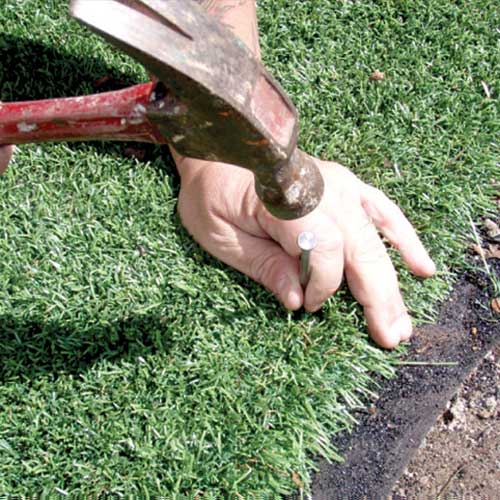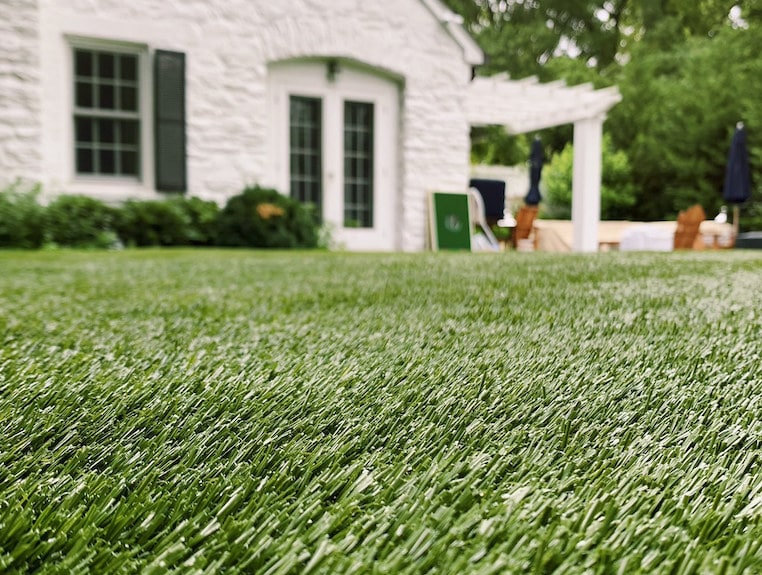See Why Homeowners Prefer Artificial Grass for Sustainable Landscape Design Practices
As property owners progressively prioritize sustainability in landscaping, synthetic grass has become a compelling option to typical grass. Its capacity to preserve water, reduce upkeep efforts, and lessen environmental impact placements it as a practical selection for those looking for green solutions. Additionally, the visual allure and convenience of fabricated turf satisfy varied style preferences. The implications of this change expand beyond simple ease and appearances, triggering a better examination of exactly how these selections affect more comprehensive environmental outcomes. What remains to be discovered is the complete range of benefits that synthetic grass can provide to house owners and the setting alike.
Water Preservation Advantages
One of the most considerable advantages of fabricated turf is its duty in water preservation. In comparison, man-made grass eliminates this need entirely, as it does not need watering.
Additionally, the setup of synthetic grass can add to an extra lasting landscape. Homeowners can significantly lower their water bills, permitting for reallocation of resources to various other environmental initiatives or family usages. In addition, fabricated turf is created to withstand different weather problems without the requirement for supplemental watering, making it a suitable choice for regions encountering water shortage.
The ecological advantages extend beyond immediate water financial savings. By decreasing water usage, man-made grass aids to mitigate the effects of climate change, protecting vital environments that are intimidated by too much water extraction. As sustainable landscape design methods acquire grip, synthetic grass emerges as a liable option for house owners looking for to produce eco-friendly outdoor spaces.
Minimized Maintenance Efforts
Artificial grass considerably lowers upkeep efforts contrasted to standard grass lawns. With man-made lawn, home owners can remove the lengthy jobs connected with all-natural landscaping, such as mowing, feeding, and weeding. This not just conserves important time yet likewise decreases physical labor, making yard care accessible for people of any ages.
Standard grass call for constant trimming to keep a visually pleasing elevation, whereas fabricated lawn stays constantly lavish without the need for cutting. Additionally, house owners no much longer need to use plant foods or pesticides, which are typically required to maintain natural turf healthy and balanced.
Additionally, man-made lawn is durable and sturdy, requiring marginal upkeep past periodic cleaning and rinsing to remove debris. This convenience of maintenance permits home owners to appreciate their exterior rooms without the consistent fear of maintenance, supplying more time for leisure and family activities. Eventually, the decreased maintenance efforts connected with artificial lawn make it an attractive choice for those looking for a low-maintenance, aesthetically appealing landscape.

Environmental Impact Decrease
There is an expanding acknowledgment of the environmental advantages related to synthetic grass, particularly in terms of water conservation and reduced chemical use. Traditional lawns call for significant quantities of water, especially in drought-prone areas, bring about raised strain on local water her explanation sources. On the other hand, synthetic grass removes the requirement for irrigation, considerably decreasing water intake and promoting sustainability.
Additionally, standard yard upkeep commonly entails the application of herbicides, plant foods, and chemicals, which can contribute to dirt and water pollution. Synthetic grass reduces this ecological danger by requiring very little upkeep and virtually removing the demand for damaging chemicals. This not only enhances soil health but additionally protects local communities from harmful overflow.
Moreover, the production of all-natural grass yards generally involves using nonrenewable fuel sources for trimming and landscaping equipment, more adding to greenhouse gas exhausts. By selecting man-made grass, home owners can dramatically reduce their carbon impact connected with yard treatment tasks.
Visual Appeal and Convenience
In addition to its environmental advantages, synthetic grass supplies considerable aesthetic charm and flexibility for landscaping. Homeowners can attain a lavish, eco-friendly look year-round, getting rid of the seasonal fluctuations why not try here frequently connected with all-natural yard. This regular aesthetic not only improves the visual allure of a building yet also adds to a polished and well-kept appearance.
In addition, man-made turf is available in a variety of colors, appearances, and designs, allowing for customization to match individual choices and style themes - Turf installation phoenix az. Whether made use of in domestic gardens, industrial areas, or leisure areas, it can flawlessly integrate into varied landscaping styles, from contemporary minimal to lush exotic settings
The adaptability of synthetic grass extends beyond mere appearance; it can be set up in different areas, including roofs, outdoor patios, and even interior areas, developing possibilities for distinct landscape design services. Additionally, it appropriates for a series of tasks, from youngsters's backyard to pet-friendly atmospheres, offering capability without compromising design.
Eventually, the aesthetic allure and versatility of synthetic grass make it an eye-catching alternative for property owners looking for lasting landscape design remedies that do not sacrifice elegance for ecological duty.

Long-Term Price Cost Savings
One of one of the most engaging advantages of synthetic grass is its capacity for long-lasting price savings. Unlike all-natural lawn, which calls for routine upkeep-- including mowing, watering, feeding, and insect control-- man-made lawn substantially lowers these recurring costs. Homeowners can conserve a considerable amount on water bills, particularly in regions where water shortage is a pressing concern. The removal of lawn treatment solutions additionally adds to financial savings, as there is no requirement for specific equipment or labor.
Additionally, synthetic grass has a life expectancy of 15 to 25 years, relying on its top quality and usage. This toughness decreases replacement expenses, making it a much more cost-effective selection over time. Additionally, the initial financial investment in fabricated turf can typically be redeemed through the financial savings built up over time.
While the upfront expense might appear greater compared read review to sod installation, the advancing savings from reduced maintenance and water usage commonly outweigh these preliminary expenditures. Ultimately, the fostering of fabricated lawn not only promotes a lasting landscape design solution but additionally offers house owners a monetarily wise choice that aligns with long-lasting budgeting objectives.
Conclusion
Synthetic grass arises as a compelling option for sustainable landscape design, providing substantial benefits in water conservation, minimized maintenance initiatives, and diminished environmental influence. Its aesthetic charm and versatility improve the aesthetic landscape while aligning with modern sustainability objectives. Long-term price savings contribute to its appearance for home owners. As neighborhoods progressively prioritize eco pleasant techniques, the adoption of fabricated lawn represents a dynamic action toward accomplishing durable and lasting landscapes.
In addition, synthetic lawn is created to endure different climatic problems without the demand for extra watering, making it a suitable option for regions encountering water scarcity. (Artificial turf companies phoenix)

Synthetic turf emerges as an engaging option for sustainable landscaping, supplying considerable benefits in water preservation, lowered upkeep efforts, and reduced ecological influence.